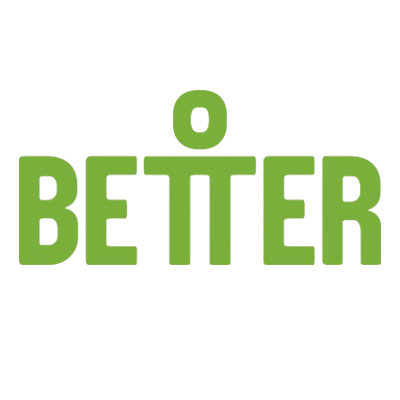In case you missed it see what’s in this section
Let's Talk
Financial Components
Financial statements, like bad news, come in threes. The news in financial statements isn't always bad, of course, but taken together it provides an accurate picture of a company's current value, plus its ability to pay its bills today and earn a profit going forward.
Financial Statements to Include
Financial data is always at the back of the business plan, but that doesn't mean it's any less important than up-front material such as the business concept and the management team. Astute investors look carefully at the charts, tables, formulas and spreadsheets in the financial section, because they know that this information is like the pulse, respiration rate and blood pressure in a human--it shows whether the patient is alive and what the odds are for continued survival.
Financial statements, like bad news, come in threes. The news in financial statements isn't always bad, of course, but taken together it provides an accurate picture of a company's current value, plus its ability to pay its bills today and earn a profit going forward.
The three common statements are a cash flow statement, an income statement and a balance sheet. Most entrepreneurs should provide them and leave it at that. But not all do. But this is a case of the more, the less merry. As a rule, stick with the big three: income, balance sheet and cash flow statements.
These three statements are interlinked, with changes in one necessarily altering the others, but they measure quite different aspects of a company's financial health. It's hard to say that one of these is more important than another. But of the three, the income statement may be the best place to start.
Income Statement
The income statement is a simple and straightforward report on the proposed business's cash-generating ability. It's a score card on the financial performance of your business that reflects when sales are made and when expenses are incurred. It draws information from the various financial models developed earlier such as revenue, expenses, capital (in the form of depreciation), and cost of goods. By combining these elements, the income statement illustrates just how much your company makes or loses during the year by subtracting cost of goods and expenses from revenue to arrive at a net result--which is either a profit or a loss.
For a business plan, the income statement should be generated on a monthly basis during the first year, quarterly for the second, and annually for each year thereafter. It's formed by listing your financial projections in the following manner:
-
Income. Includes all the income generated by the business and its sources.
-
Cost of goods. Includes all the costs related to the sale of products in inventory.
-
Gross profit margin. The difference between revenue and cost of goods. Gross profit margin can be expressed in dollars, as a percentage, or both. As a percentage, the GP margin is always stated as a percentage of revenue.
-
Operating expenses. Includes all overhead and labor expenses associated with the operations of the business.
-
Total expenses. The sum of all overhead and labor expenses required to operate the business.
-
Net profit. The difference between gross profit margin and total expenses, the net income depicts the business's debt and capital capabilities.
-
Depreciation. Reflects the decrease in value of capital assets used to generate income. Also used as the basis for a tax deduction and an indicator of the flow of money into new capital.
-
Net profit before interest. The difference between net profit and depreciation.
-
Interest. Includes all interest derived from debts, both short-term and long-term. Interest is determined by the amount of investment within the company.
-
Net profit before taxes. The difference between net profit before interest and interest.
-
Taxes. Includes all taxes on the business.
-
Profit after taxes. The difference between net profit before taxes and the taxes accrued. Profit after taxes is the bottom line for any company.
Following the income statement is a short note analyzing the statement. The analysis statement should be very short, emphasizing key points within the income statement.
Cash Flow Statement
The cash-flow statement is one of the most critical information tools for your business, showing how much cash will be needed to meet obligations, when it is going to be required, and from where it will come. It shows a schedule of the money coming into the business and expenses that need to be paid. The result is the profit or loss at the end of the month or year. In a cash-flow statement, both profits and losses are carried over to the next column to show the cumulative amount. Keep in mind that if you run a loss on your cash-flow statement, it is a strong indicator that you will need additional cash in order to meet expenses.
Like the income statement, the cash-flow statement takes advantage of previous financial tables developed during the course of the business plan. The cash-flow statement begins with cash on hand and the revenue sources. The next item it lists is expenses, including those accumulated during the manufacture of a product. The capital requirements are then logged as a negative after expenses. The cash-flow statement ends with the net cash flow.
The cash-flow statement should be prepared on a monthly basis during the first year, on a quarterly basis during the second year, and on an annual basis thereafter. Items that you'll need to include in the cash-flow statement and the order in which they should appear are as follows:
-
Cash sales. Income derived from sales paid for by cash.
-
Receivables. Income derived from the collection of receivables.
-
Other income. Income derived from investments, interest on loans that have been extended, and the liquidation of any assets.
-
Total income. The sum of total cash, cash sales, receivables, and other income.
-
Material/merchandise. The raw material used in the manufacture of a product (for manufacturing operations only), the cash outlay for merchandise inventory (for merchandisers such as wholesalers and retailers), or the supplies used in the performance of a service.
-
Production labor. The labor required to manufacture a product (for manufacturing operations only) or to perform a service.
-
Overhead. All fixed and variable expenses required for the production of the product and the operations of the business.
-
Marketing/sales. All salaries, commissions, and other direct costs associated with the marketing and sales departments.
-
R&D. All the labor expenses required to support the research and development operations of the business.
-
G&A. All the labor expenses required to support the administrative functions of the business.
-
Taxes. All taxes, except payroll, paid to the appropriate government institutions.
-
Capital. The capital required to obtain any equipment elements that are needed for the generation of income.
-
Loan payment. The total of all payments made to reduce any long-term debts.
-
Total expenses. The sum of material, direct labor, overhead expenses, marketing, sales, G&A, taxes, capital and loan payments.
-
Cash flow. The difference between total income and total expenses. This amount is carried over to the next period as beginning cash.
-
Cumulative cash flow. The difference between current cash flow and cash flow from the previous period.
As with the income statement, you will need to analyze the cash-flow statement in a short summary in the business plan. Once again, the analysis statement doesn't have to be long and should cover only key points derived from the cash-flow statement.
The Balance Sheet
The last financial statement you'll need to develop is the balance sheet. Like the income and cash-flow statements, the balance sheet uses information from all of the financial models developed in earlier sections of the business plan; however, unlike the previous statements, the balance sheet is generated solely on an annual basis for the business plan and is, more or less, a summary of all the preceding financial information broken down into three areas:
1. Assets
2. Liabilities
3. Equity
To obtain financing for a new business, you may need to provide a projection of the balance sheet over the period of time the business plan covers. More importantly, you'll need to include a personal financial statement or balance sheet instead of one that describes the business. A personal balance sheet is generated in the same manner as one for a business.
As mentioned, the balance sheet is divided into three sections. The top portion of the balance sheet lists your company's assets. Assets are classified as current assets and long-term or fixed assets. Current assets are assets that will be converted to cash or will be used by the business in a year or less. Current assets include:
Cash. The cash on hand at the time books are closed at the end of the fiscal year.
-
Accounts receivable. The income derived from credit accounts. For the balance sheet, it's the total amount of income to be received that is logged into the books at the close of the fiscal year.
-
Inventory. This is derived from the cost of goods table. It's the inventory of material used to manufacture a product not yet sold.
-
Total current assets. The sum of cash, accounts receivable, inventory, and supplies.
Other assets that appear in the balance sheet are called long-term or fixed assets. They are called long-term because they are durable and will last more than one year. Examples of this type of asset include:
-
Capital and plant. The book value of all capital equipment and property (if you own the land and building), less depreciation.
-
Investment. All investments by the company that cannot be converted to cash in less than one year. For the most part, companies just starting out have not accumulated long-term investments.
-
Miscellaneous assets. All other long-term assets that are not "capital and plant" or "investments."
-
Total long-term assets. The sum of capital and plant, investments, and miscellaneous assets.
-
Total assets. The sum of total current assets and total long-term assets.
After the assets are listed, you need to account for the liabilities of your business. Like assets, liabilities are classified as current or long-term. If the debts are due in one year or less, they are classified as a current liabilities. If they are due in more than one year, they are long-term liabilities. Examples of current liabilities are as follows:
-
Accounts payable. All expenses derived from purchasing items from regular creditors on an open account, which are due and payable.
-
Accrued liabilities. All expenses incurred by the business which are required for operation but have not been paid at the time the books are closed. These expenses are usually the company's overhead and salaries.
-
Taxes. These are taxes that are still due and payable at the time the books are closed.
-
Total current liabilities. The sum of accounts payable, accrued liabilities, and taxes.
Long-term liabilities include:
-
Bonds payable. The total of all bonds at the end of the year that are due and payable over a period exceeding one year.
-
Mortgage payable. Loans taken out for the purchase of real property that are repaid over a long-term period. The mortgage payable is that amount still due at the close of books for the year.
-
Notes payable. The amount still owed on any long-term debts that will not be repaid during the current fiscal year.
-
Total long-term liabilities. The sum of bonds payable, mortgage payable, and notes payable.
-
Total liabilities. The sum of total current and long-term liabilities.
Once the liabilities have been listed, the final portion of the balance sheet-owner's equity-needs to be calculated. The amount attributed to owner's equity is the difference between
total assets and total liabilities. The amount of equity the owner has in the business is an important yardstick used by investors when evaluating the company. Many times it determines the amount of capital they feel they can safely invest in the business.
In the business plan, you'll need to create an analysis statement for the balance sheet just as you need to do for the income and cash flow statements. The analysis of the balance sheet should be kept short and cover key points about the company.
Weather in Cardiff
Listings

















